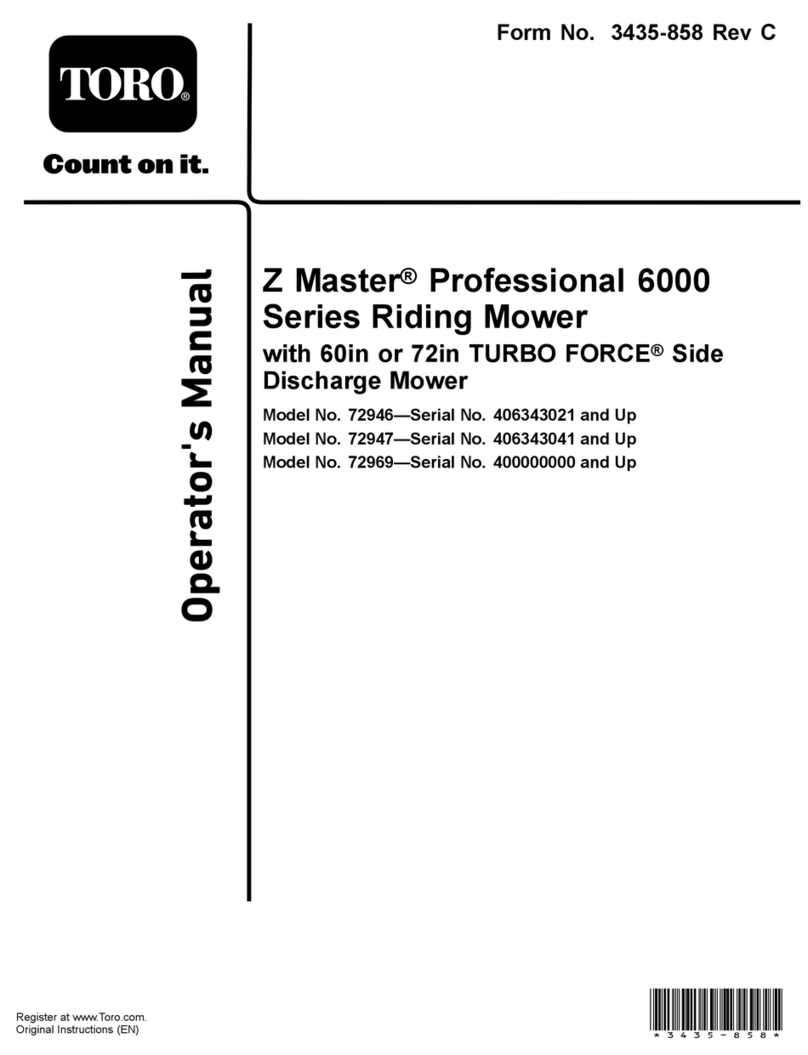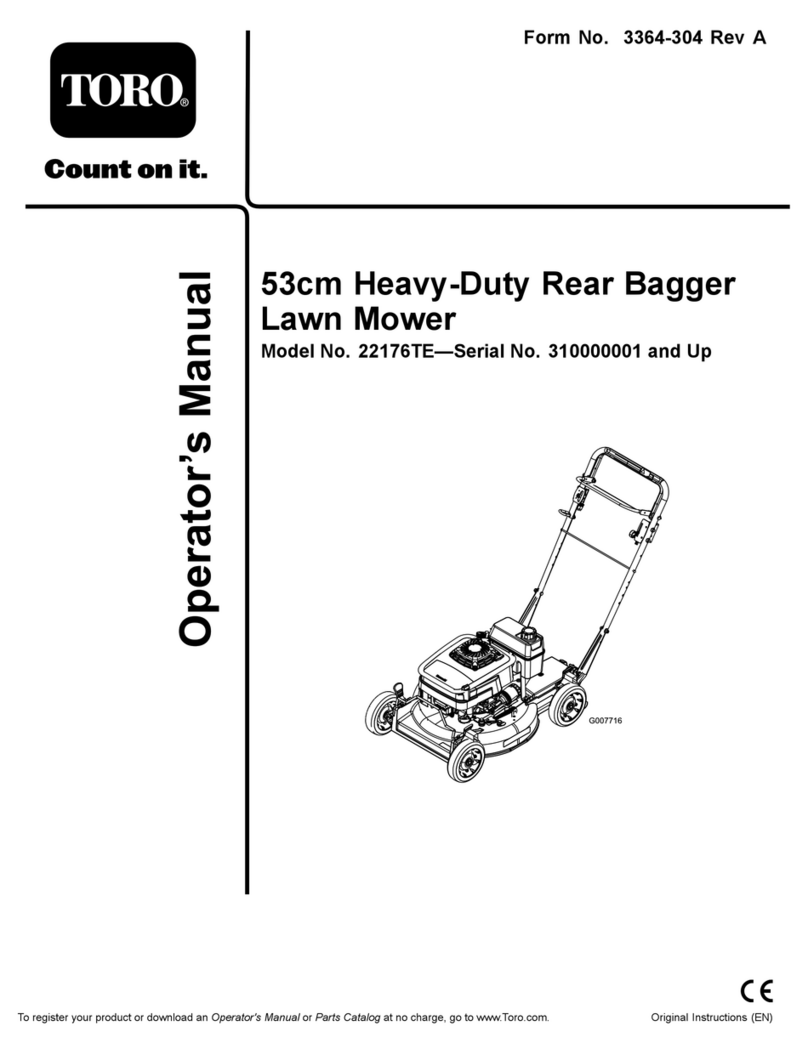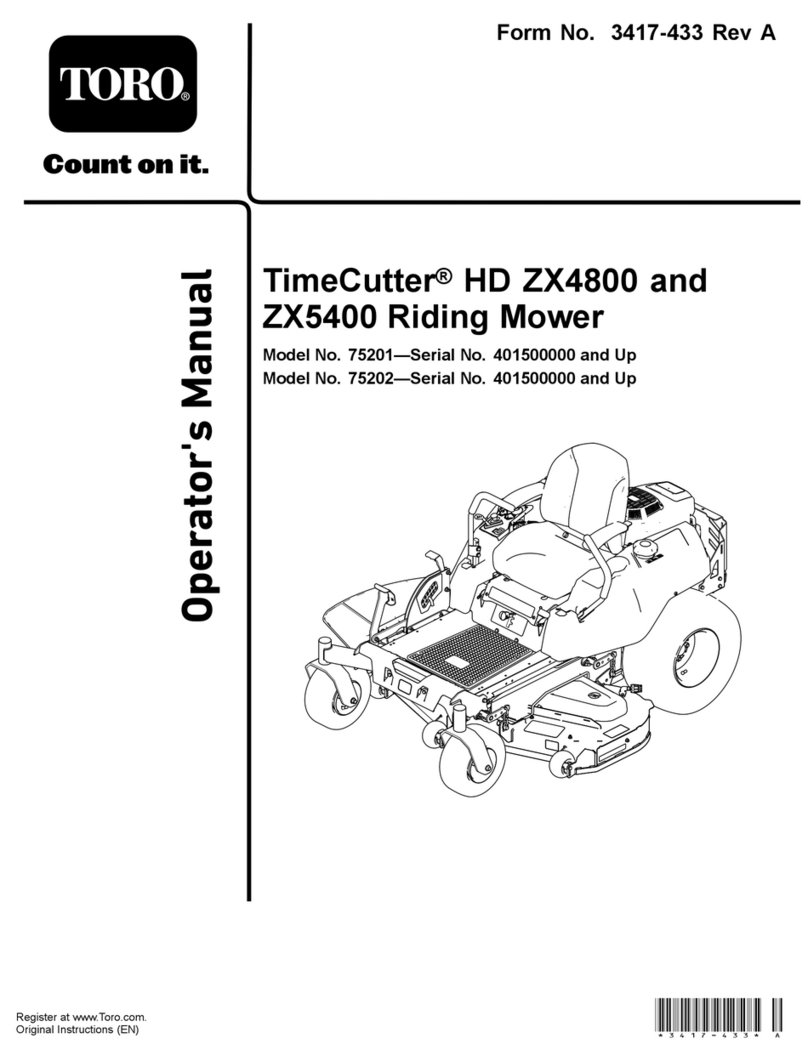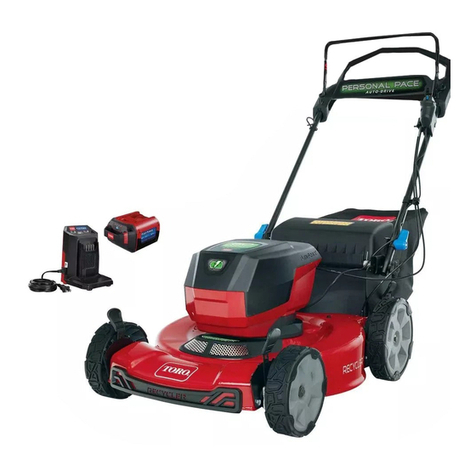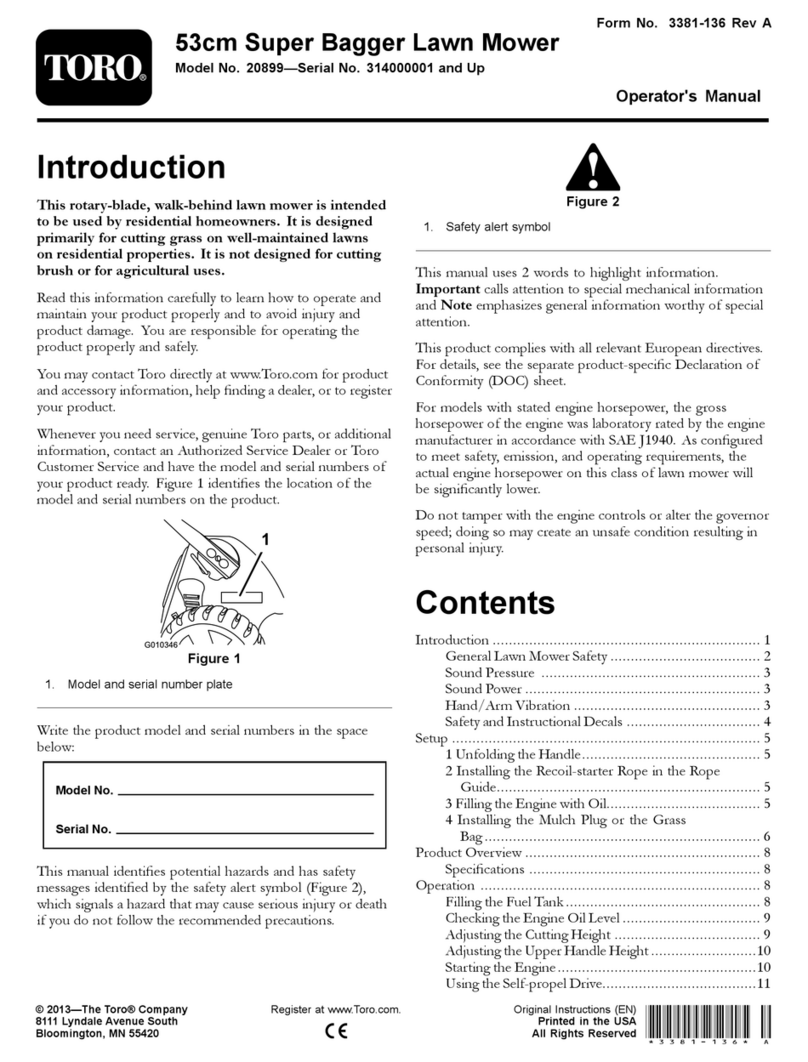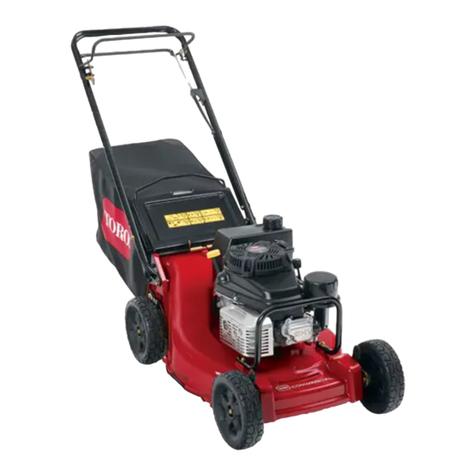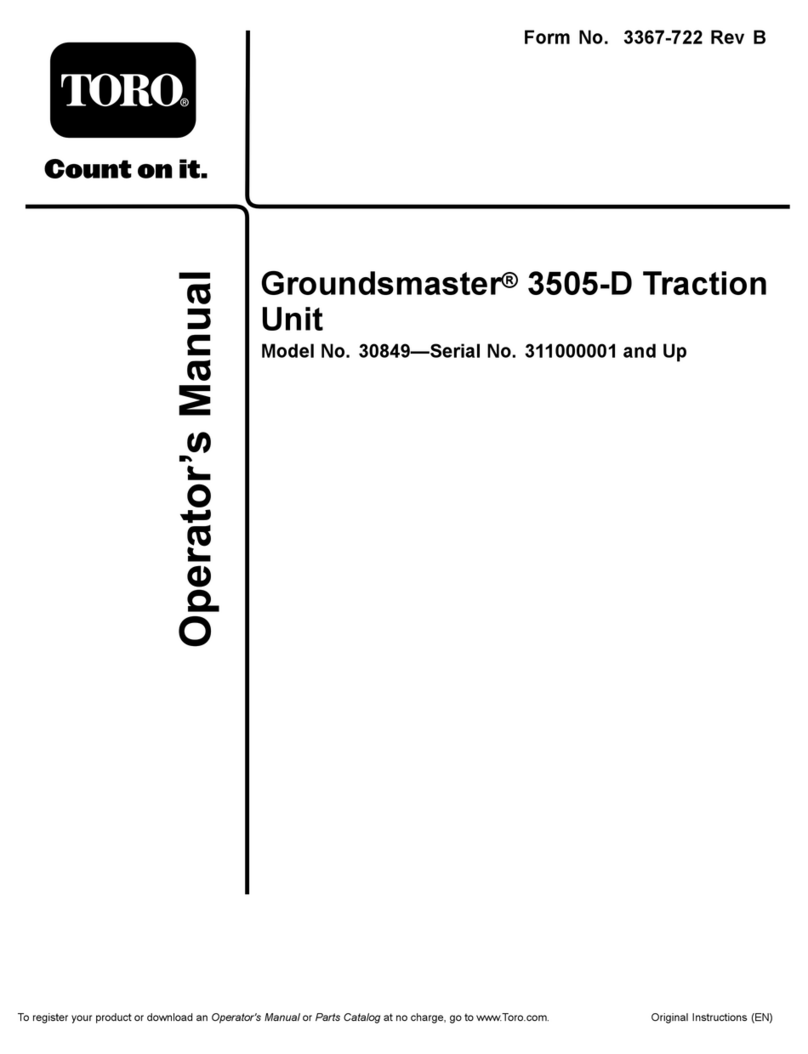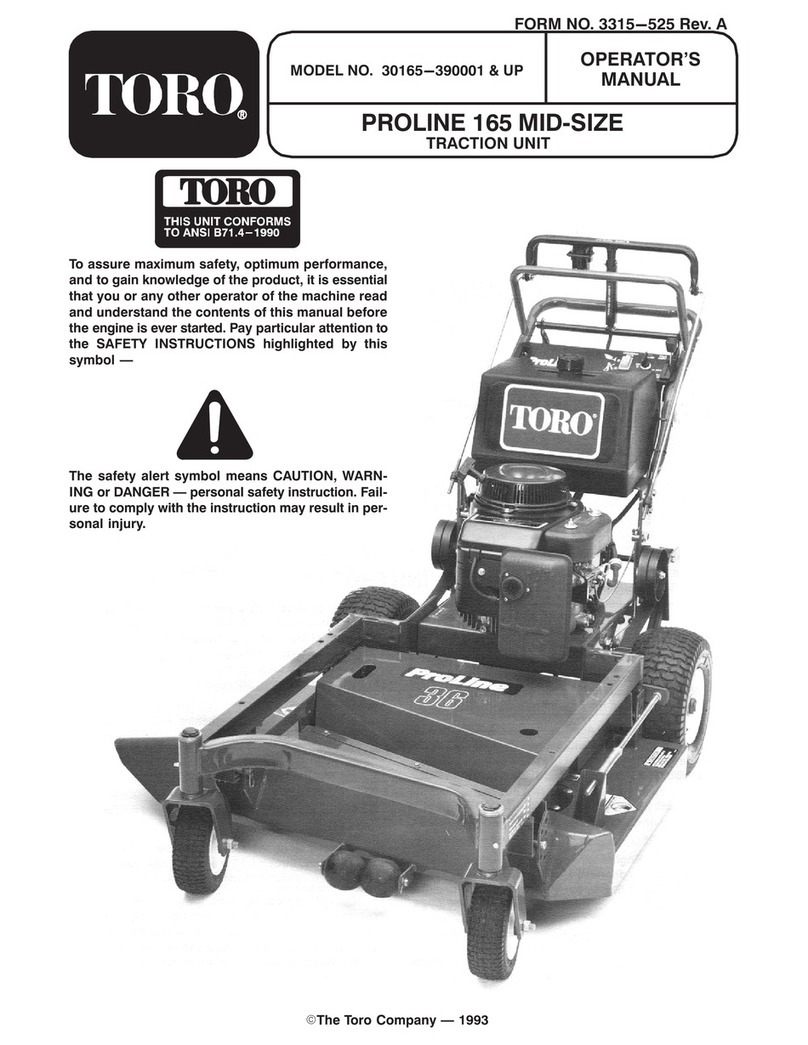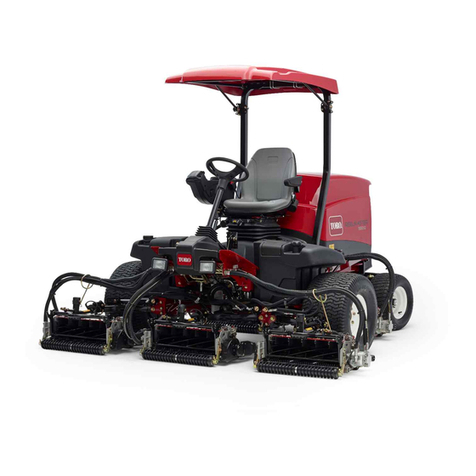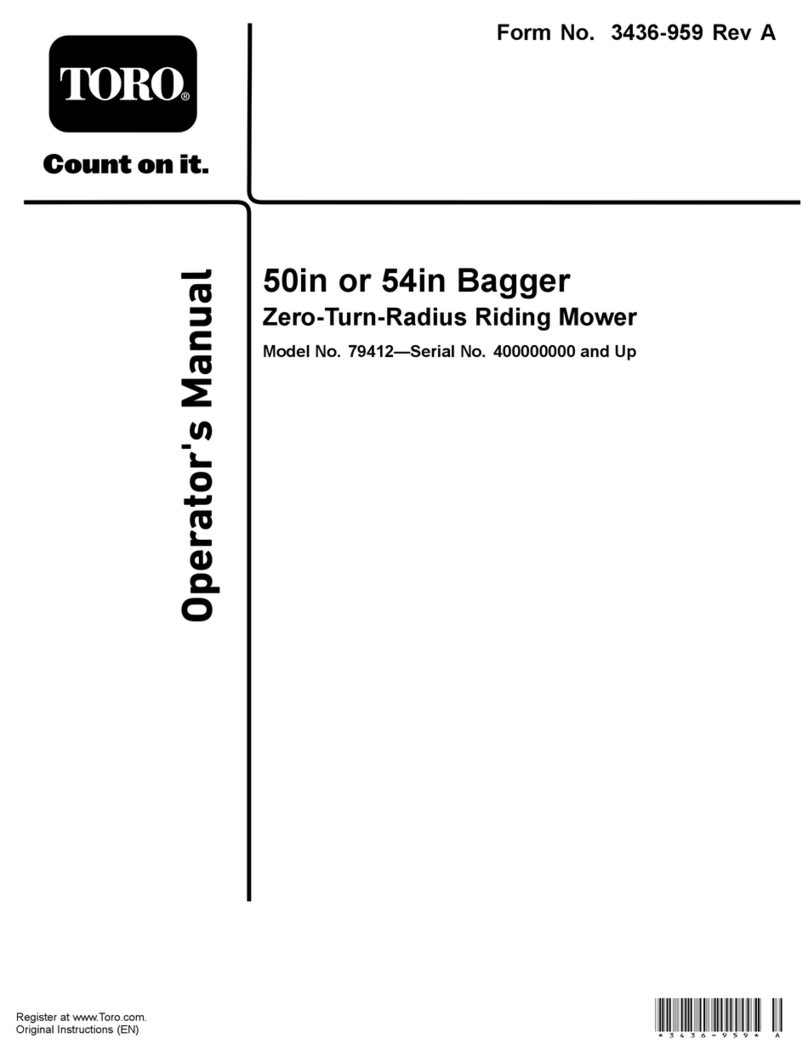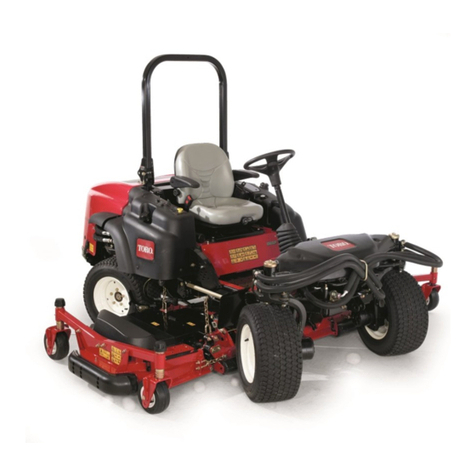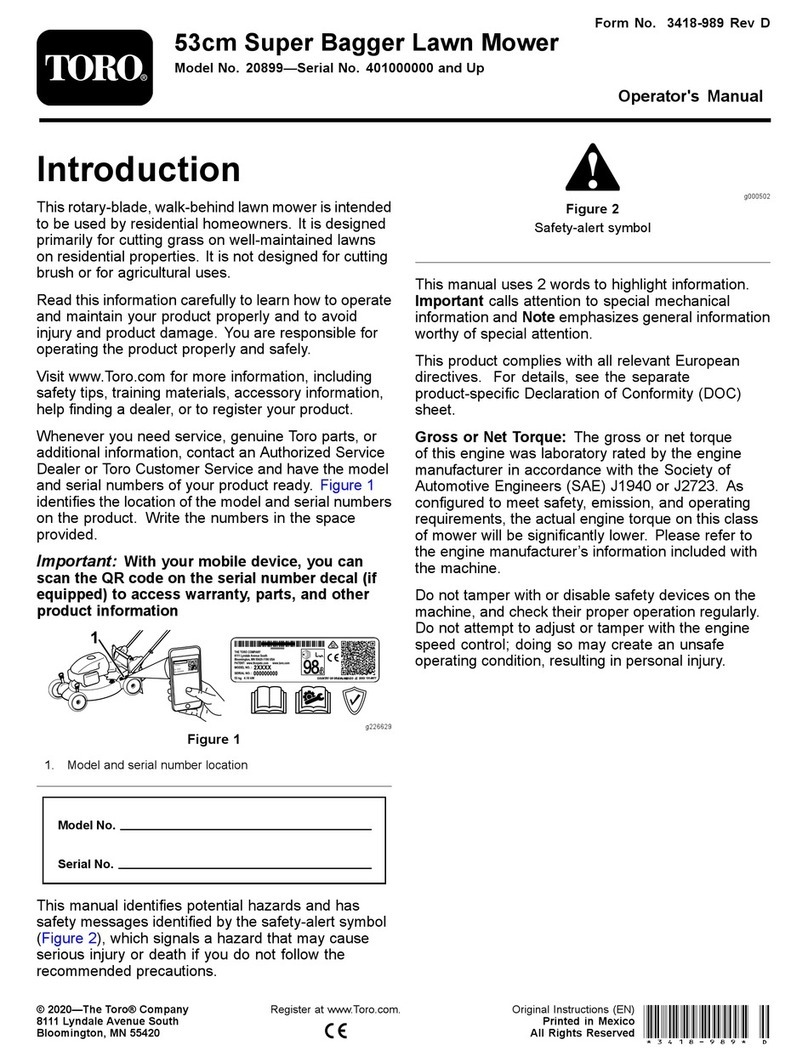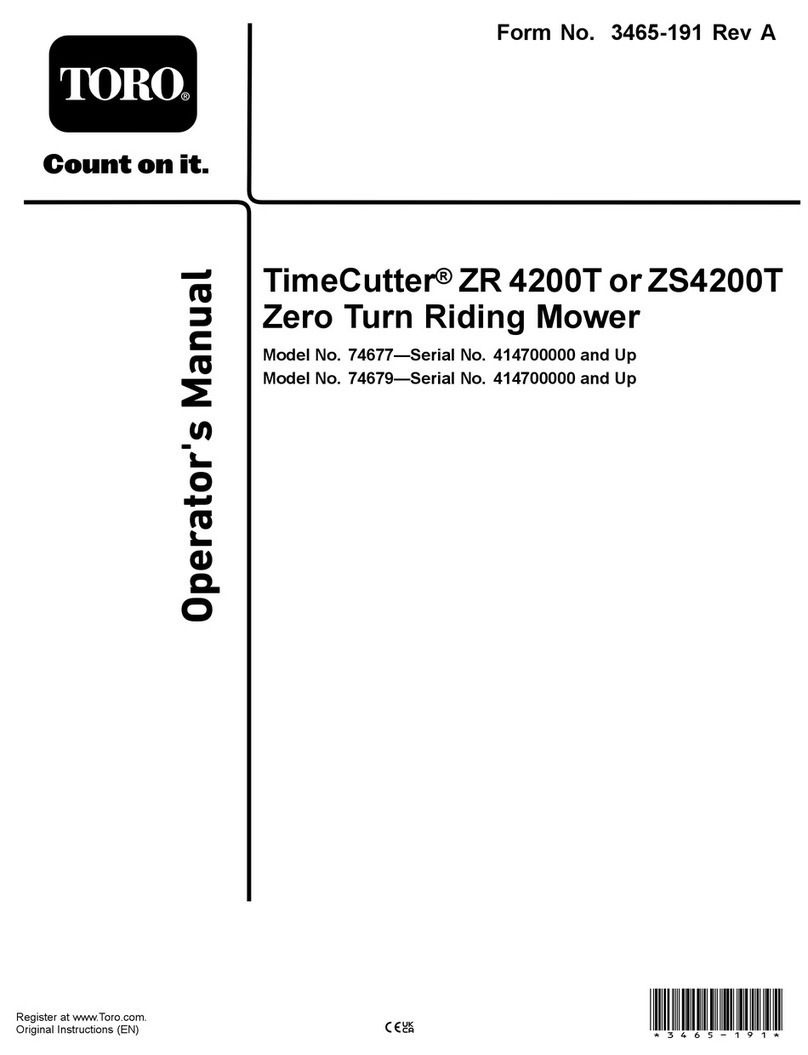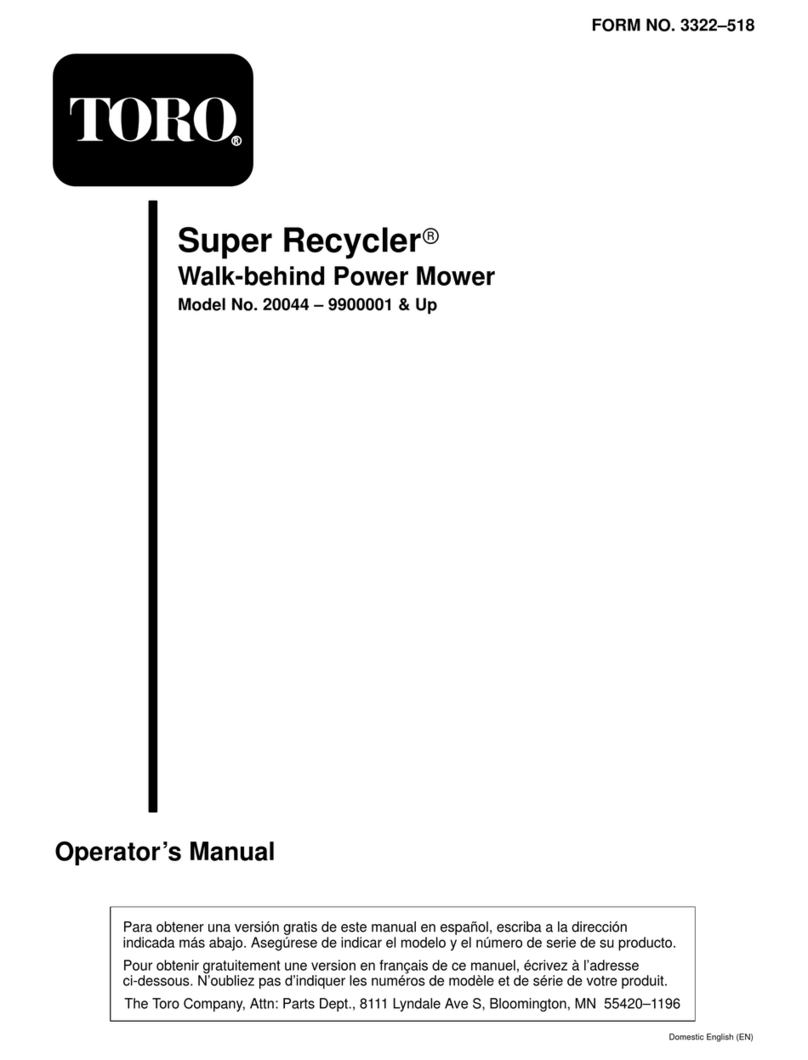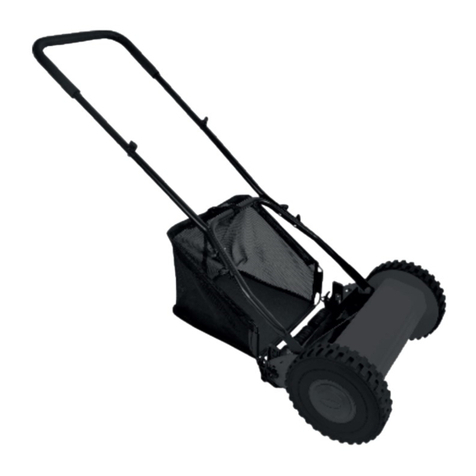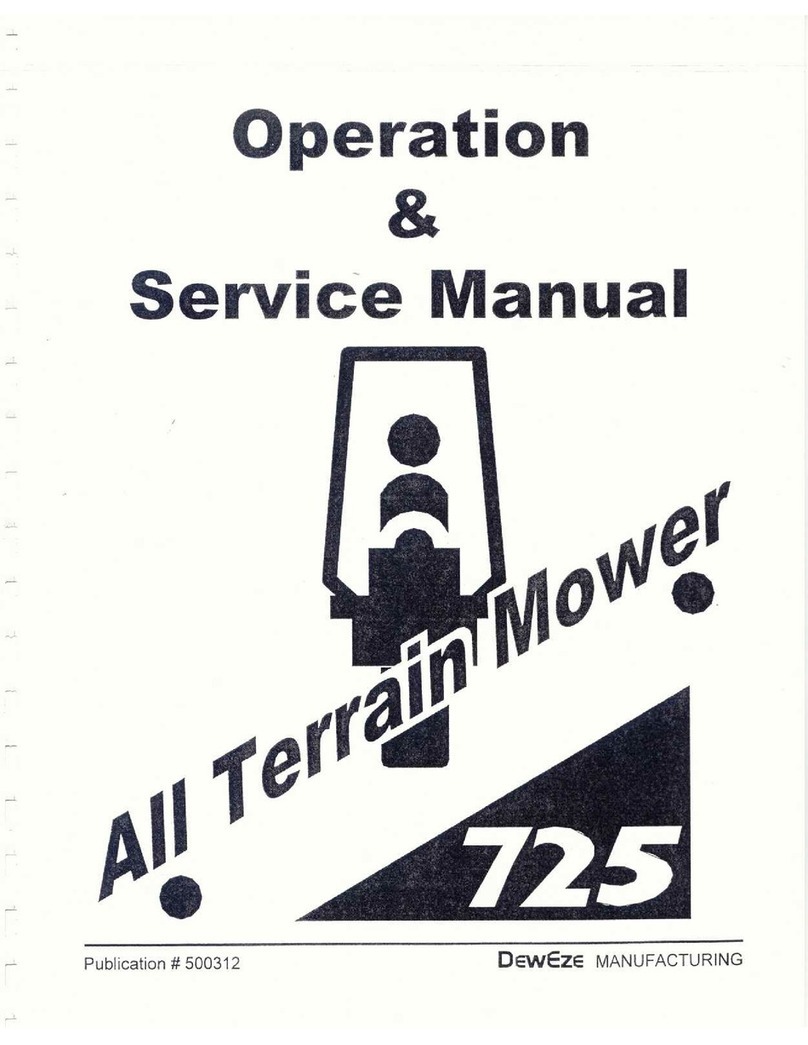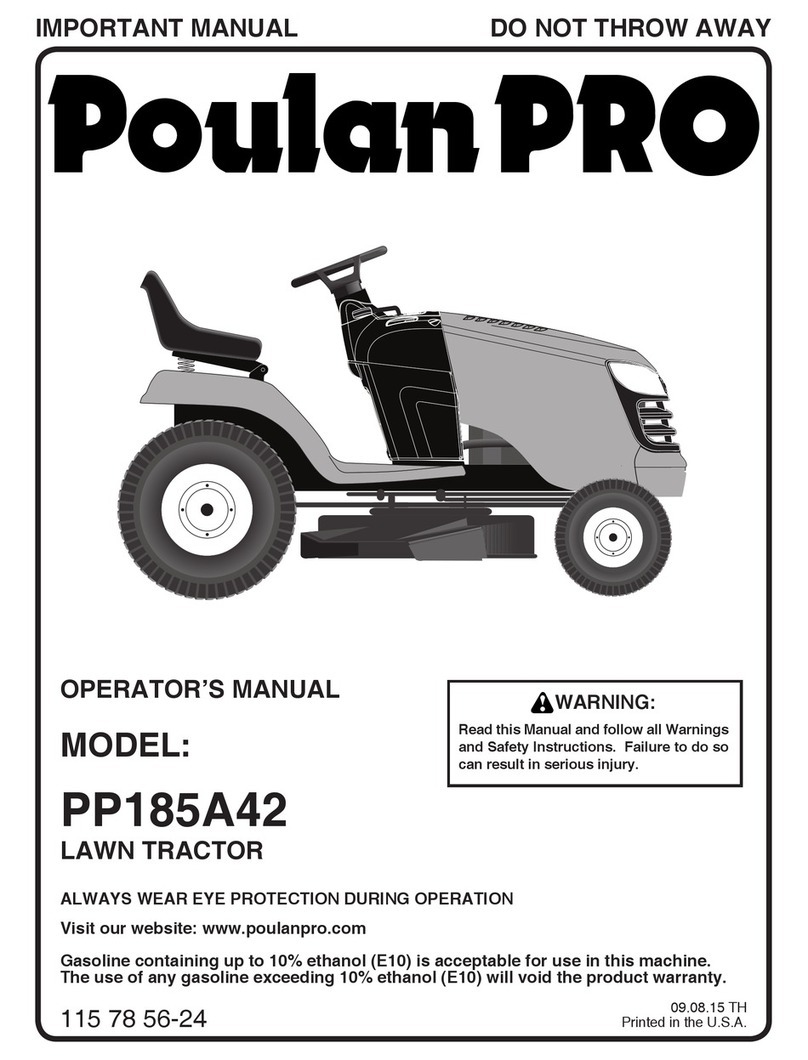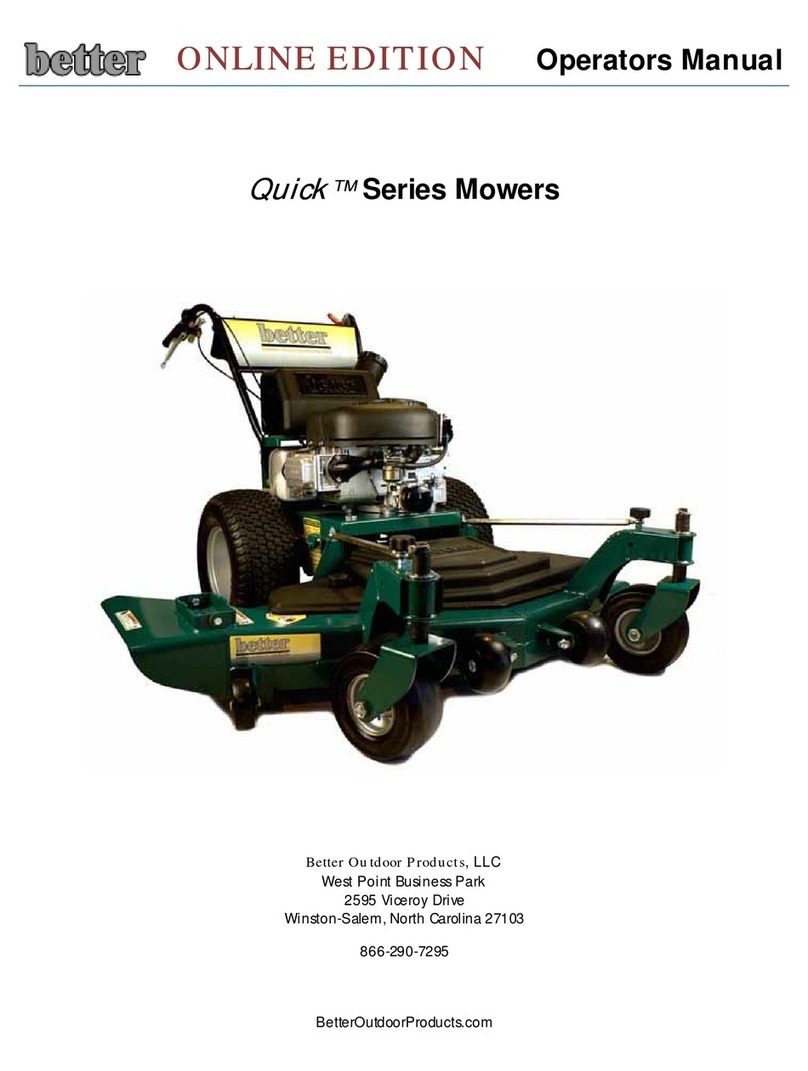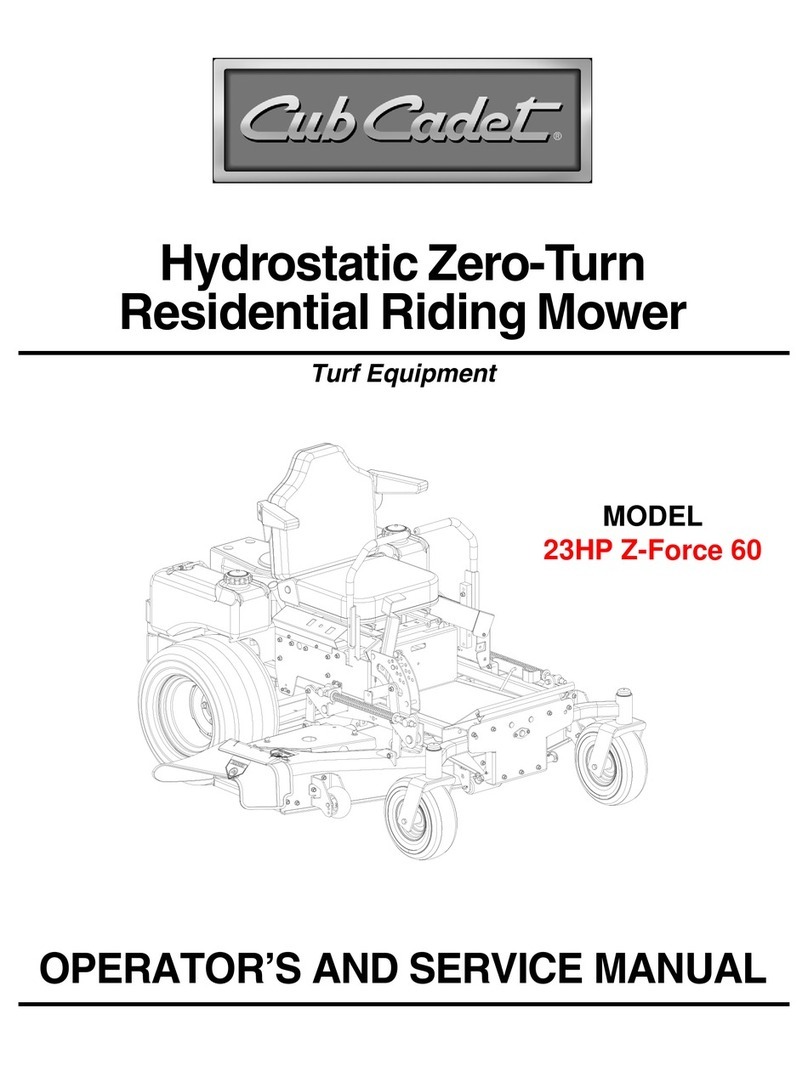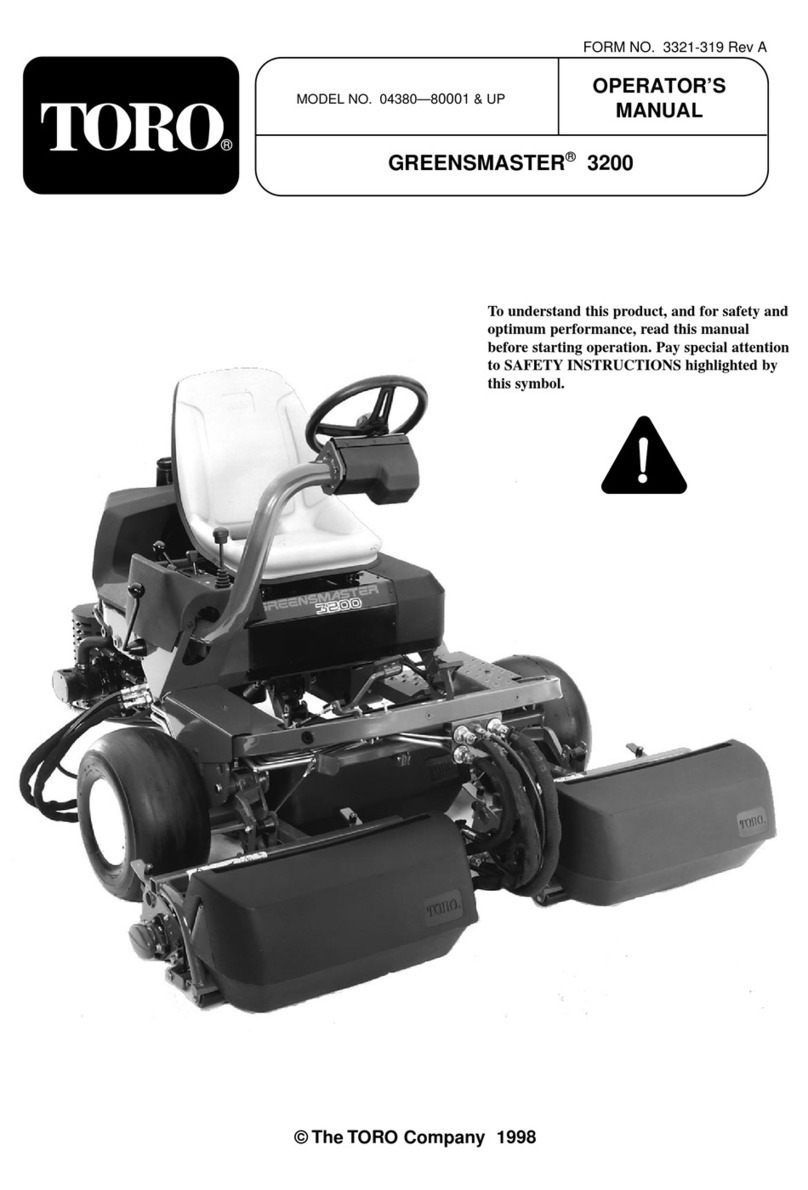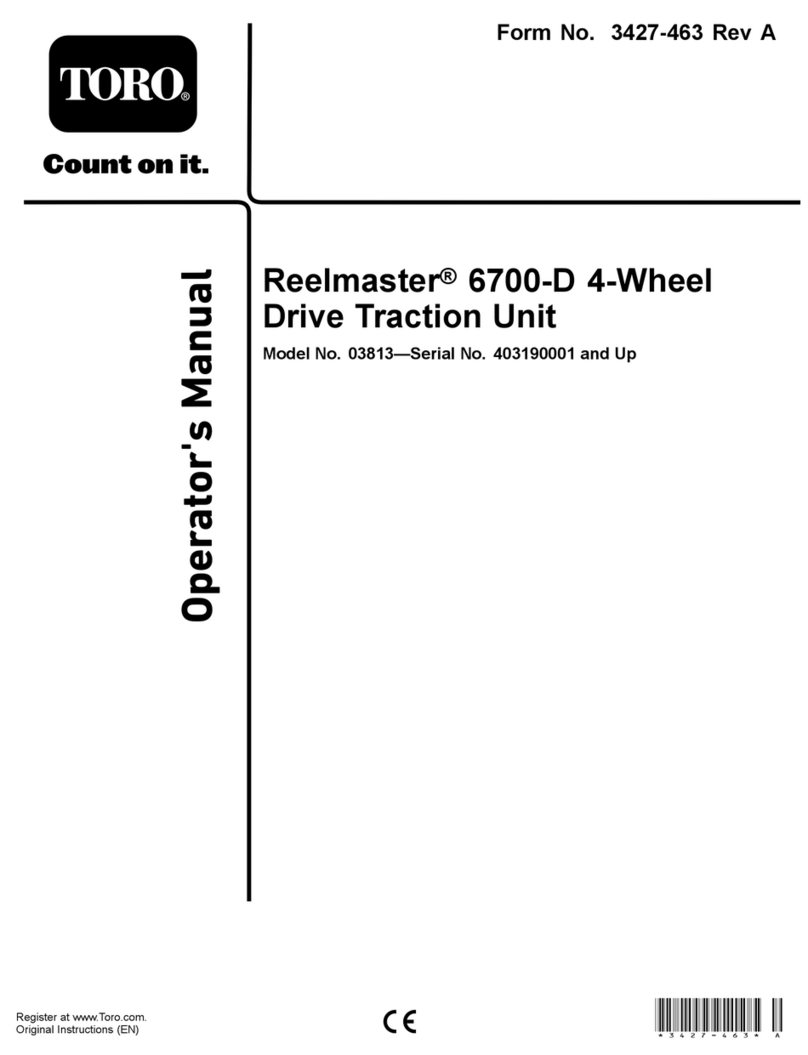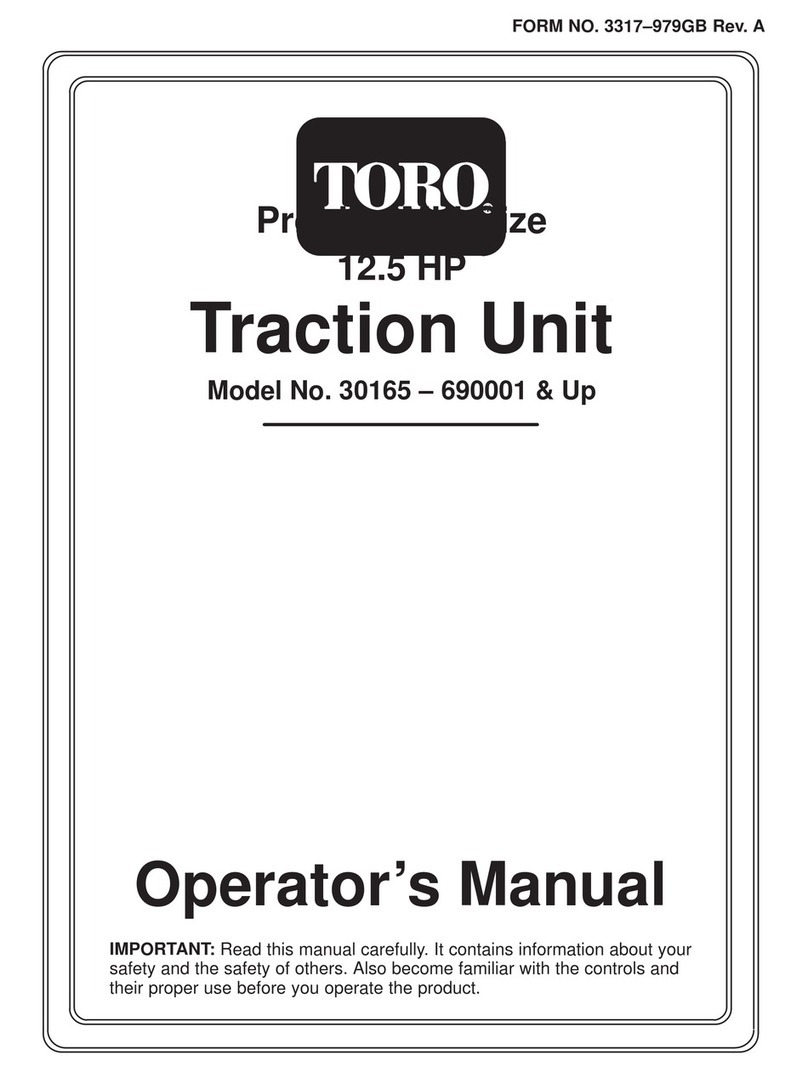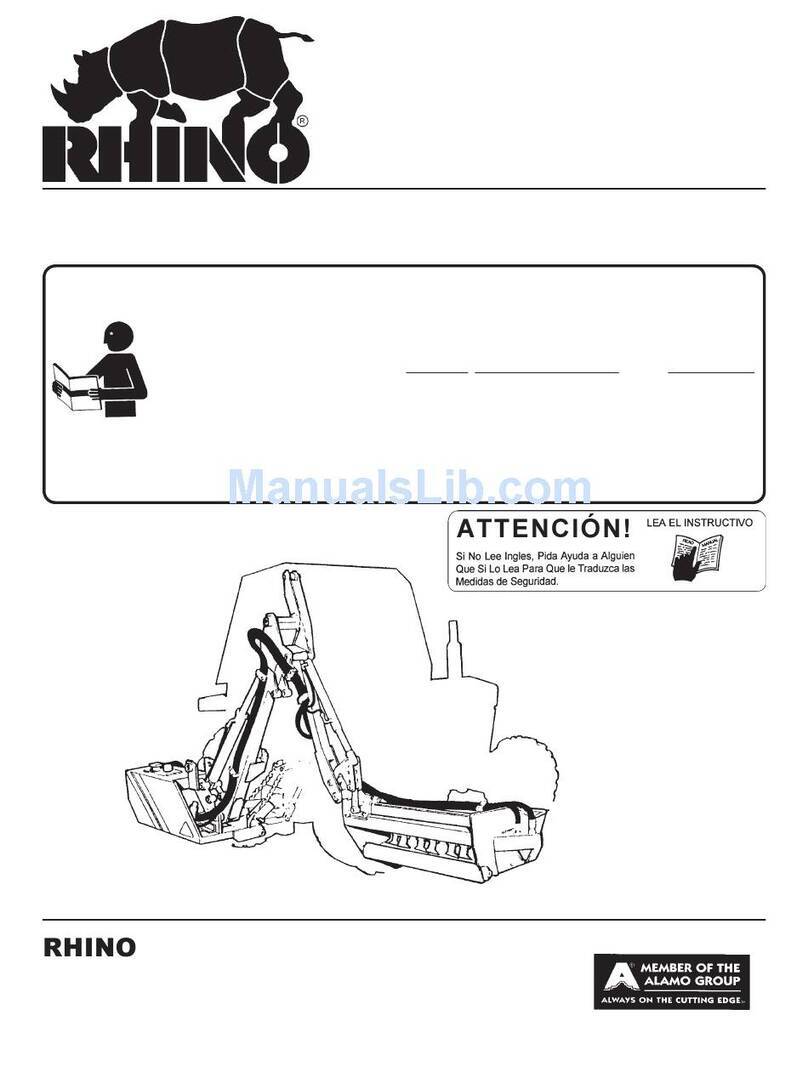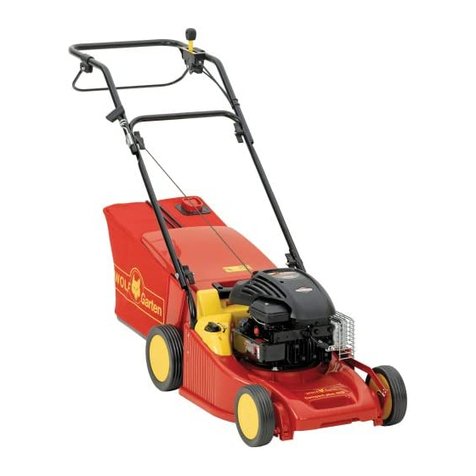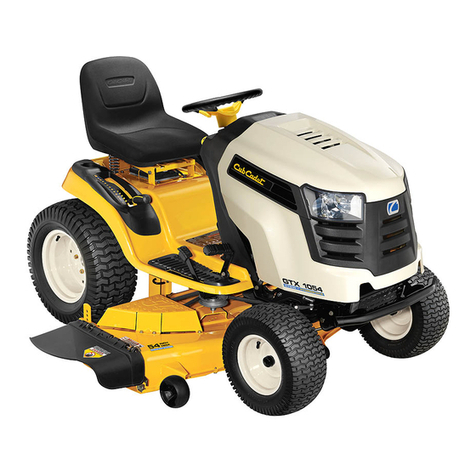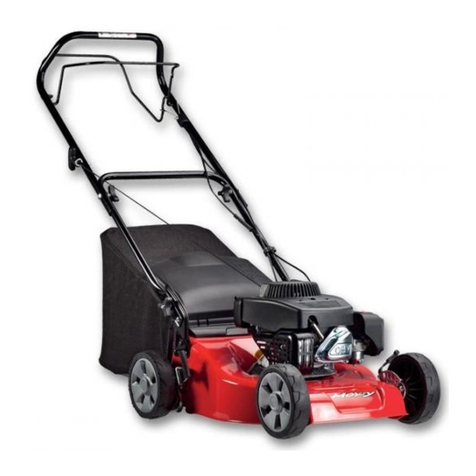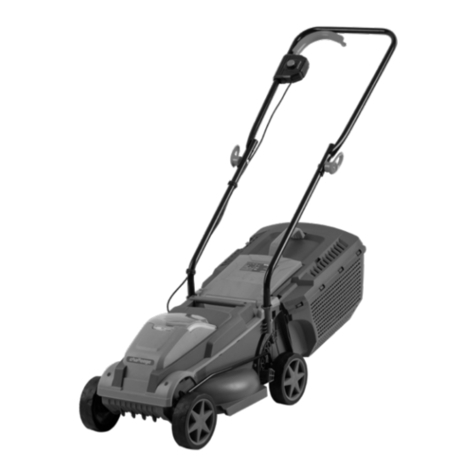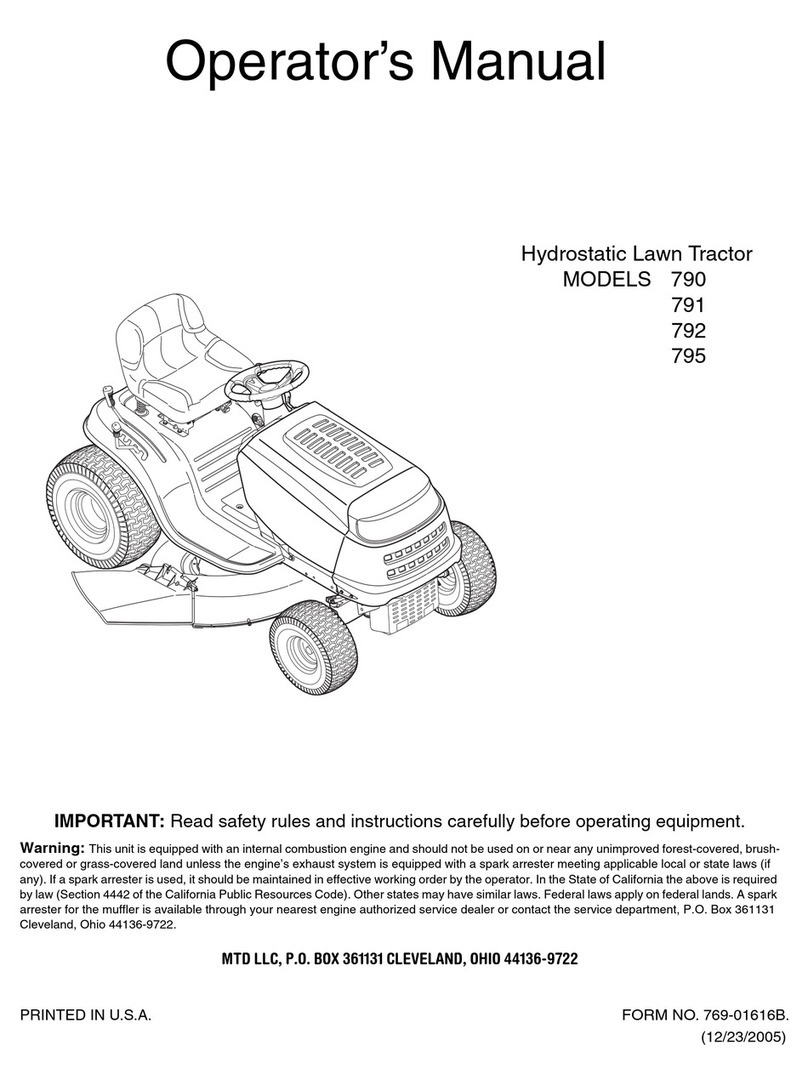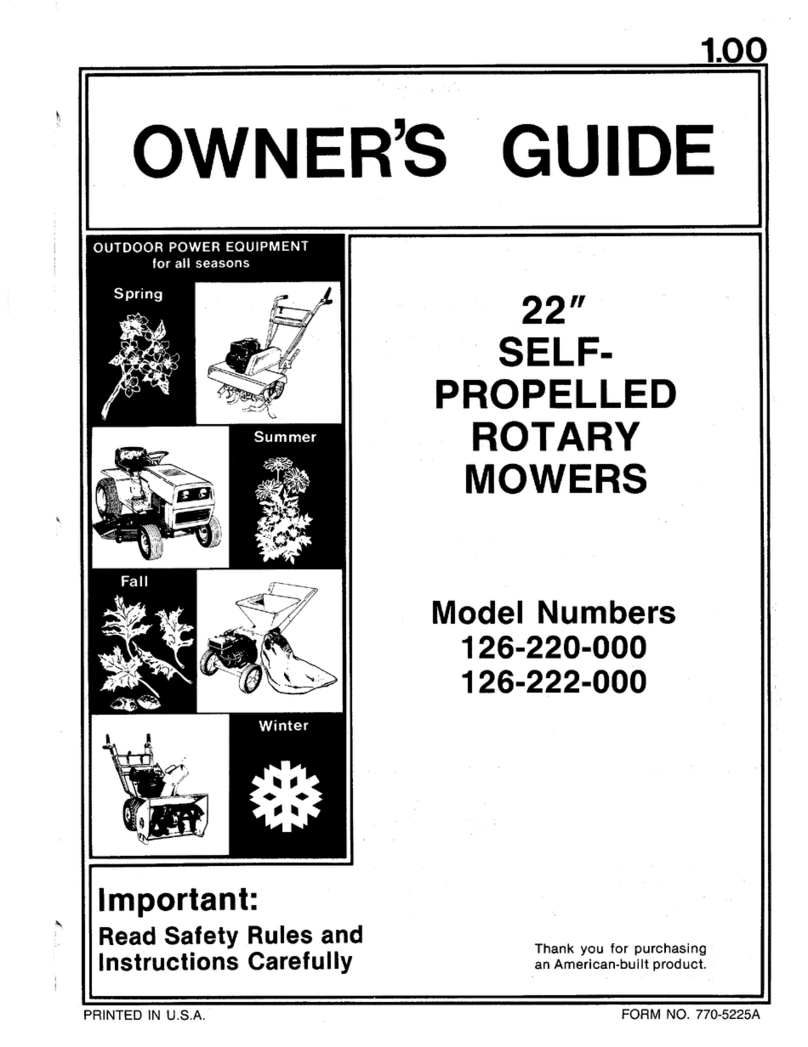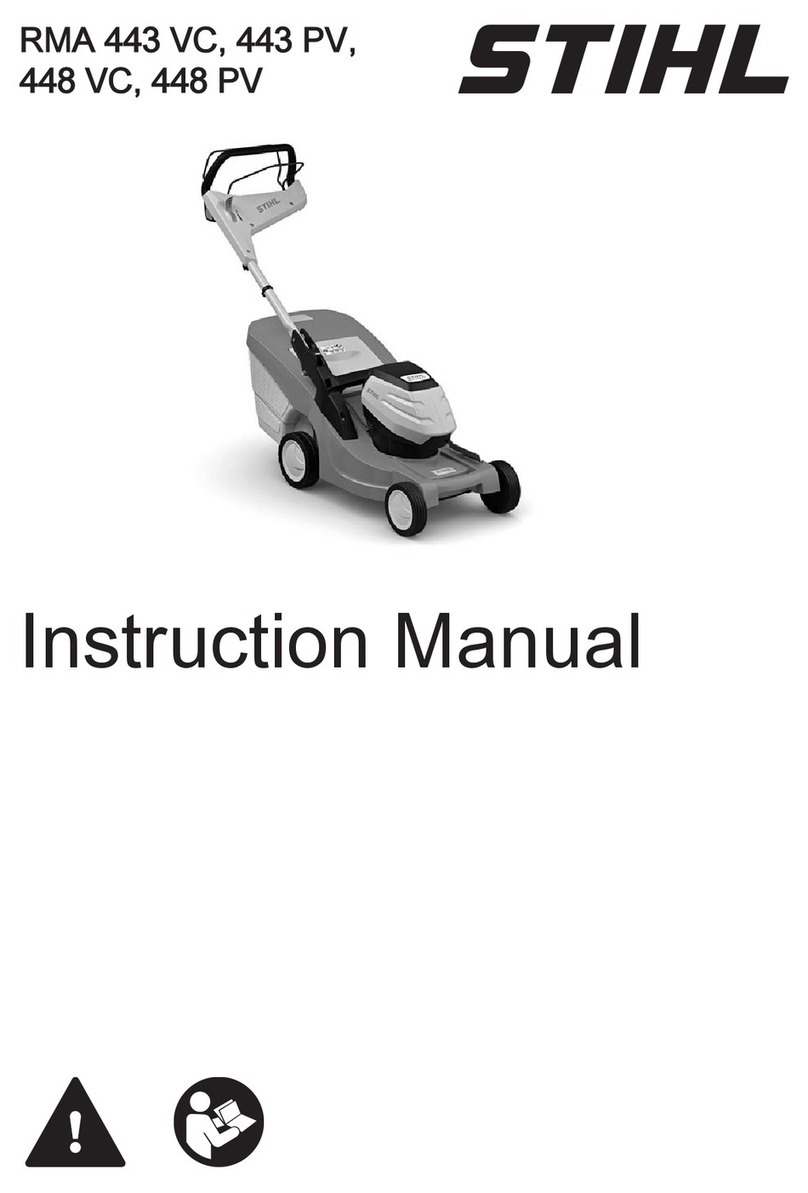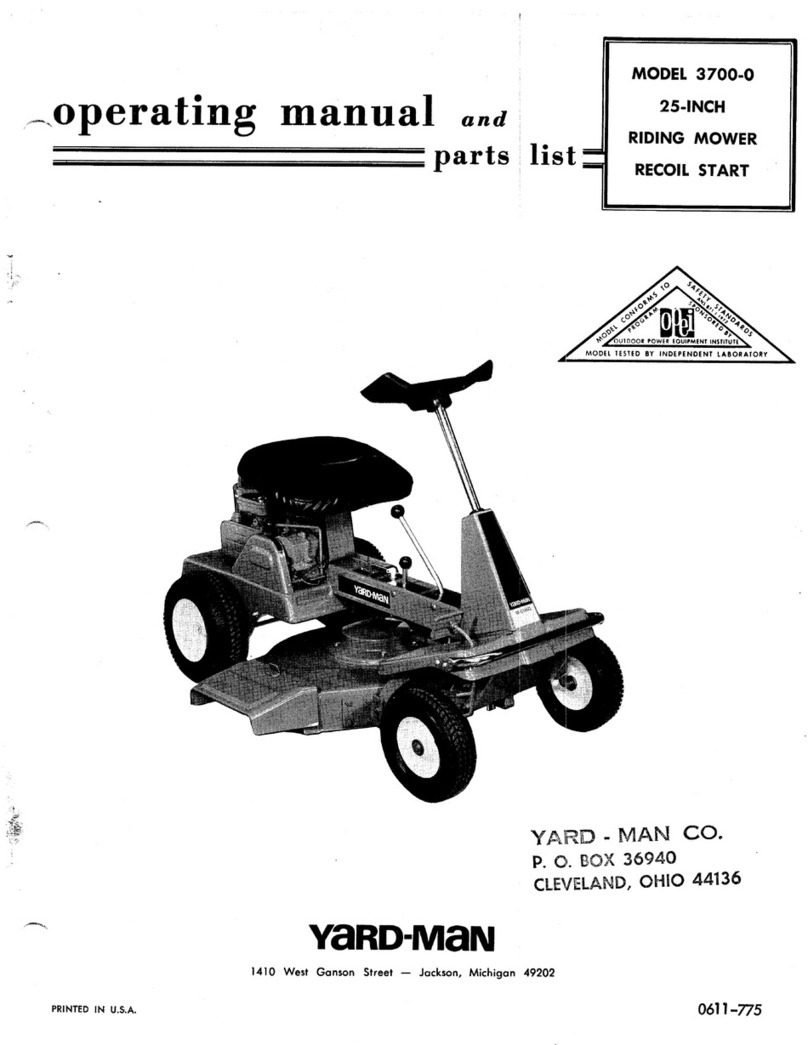
!
0*,0(
Manufacturer Ċ Mitsubishi.
Horsepower Ċ 22 (16 w) @ 3000 RPM.
Torque Ċ 40 ft-lb (54.2 Nm) @ 2400 RPM.
Displacement Ċ 58.1 cu in. (952 cc).
Crankcase Capacity Ċ 3.8 qt. (3.6 L).
Governor Ċ Mechanical.
Governor Limit Ċ 3100Ć3250 RPM.
Idle Speed Ċ 1700 RPM.
,3 .(%0(3 Donaldson heavy duty with precleaner.
Remote mounted.
6(. !%0- %2%&,5: 8.5 gal. (32 l).
6(. ,.5(3$%5(3 (2%3%513 3 micron spinĆon type
element. Replaceable (Toro Part No. 63-8300).
6(. 6/2 12 volt electric (transistor type)
w/replaceable fuel filter (Toro Part No. 43-2550).
11.,0* :45(/
Radiator Ċ Approx. 6 qt (5.7 l) capacity.
Expansion Tank Ċ Remote mounted; 1 qt (0.946 l)
capacity. System contains a 50/50 mix of ethylene
glycol antiĆfreeze and water.
.(&53,&%. Battery Ċ 12 volt, BCI group size 26,530
Amp at 0 F. 35 amp alternator with regulator/rectifier.
3,7( 162.,0* Transmission driven by steel shaft
with flexible rubber couplings at each end.
!3%04/,44,10
Manufacturer & Type Ċ Sundstrand hydrostatic,
Type U15.
Normal Charge Pressure Ċ 70Ć150 psi
(483Ć1034 kPa).
Implement Relief Setting Ċ 700Ć800 psi
(4 826 Ć 5 516 kPa).
:'3%6.,& ,.5(3 25 micron mounted directly to
transmission. Replaceable (Toro Part No. 23-2300).
3,7( 9.( Manufacturer Ċ Dana Corp., Model GTĆ20.
Axle serves as a hydraulic fluid reservoir and mates
directly with the transmission. Approximately 5 qt (4.7 l)
capacity.
3%-(4 Mechanical drum type, 7 in. (17.8 cm) dia. x
1Ć3/4 in. (45 mm) wide. Individually controlled by two
pedals connected by cable and conduit for steering
assist. Pedals may be latched together for two wheel
braking. Lever provided for parking brake.
!,3(4 $+((.4 3(4463(
Front Tires Ċ 23 x 8.50 - 12
Rear Tires Ċ 16 x 6.50 - 8
All tires 4 ply rating, tubeless type.
(Pressure Ċ 20 psi (138 kPa).
5((3,0* 13 in. (33 cm) steering wheel. TRW power
steering valve.
%,0 3%/( Frame is welded, formed steel.
04536/(05%5,10 Fuel gauge, water temperature
gauge, hour meter and warning lights for high
temperature shutdown, oil pressure, amperage and
glow plug are mounted on the console.
10531.4 Throttle, PTO switch, parking brake,
implement lift, ignition switch and glow plug switch are
all handĆoperated. Forward/reverse traction pedal and
turning brakes are foot operated.
! 3,7( Splined PTO shaft is clutched by a
torqueĆteamed HA Section, spring tensioned VĆbelt
directly from engine output shaft. PTO shaft engaged
by electric clutch/brake assembly. PTO speed Ċ 2200
RPM @ 3250 RPM engine speed.
/2.(/(05 100(&5,10 Ċ Universal joint and
telescoping shaft assembly.
,)5 :.,0'(34 Two, with 2 in. (51 mm) bore, 3.5 in. (89
mm) stroke.
05(3.1&- 8,5&+(4 Prevents engine starting if traction
pedal or PTO switch are engaged. Stops engine if
operator leaves seat with either traction pedal or PTO
switch engaged.
,/(04,104 %0' $(,*+5 %22319
Traction Unit w/Standard Seat
Length: 82 in.
Width: (Rear Wheels) 44 in.
Height: 50 in.
Weight: 1120 lb
! "!
,'( ,4&+%3*( 655,0* "0,5ĊModel No. 30555
(%3 ,4&+%3*( 655,0* "0,5ĊModel No. 30568
,'( ,4&+%3*( 655,0* "0,5ĊModel No. 30564
6%3',%0 (&:&.(3 655,0* "0,5ĊModel No.
30569
,'( ,4&+%3*( 655,0* "0,5ĊModel No. 30575
#;.18 ,5 Ċ Model No. 30750
#;.18 1605,0* ,5 Ċ Model No. 30749. Required
with 30750 VĆPlow. 11Ć0390 Tire Chains
recommended.
3/ (45 ,5 Ċ Model 30707. Fits Models 30769,
30772 Seat its.
(%3 ,4&+%3*( +,(.' ,5 Ċ Model No. 30567.
(%3 $(,*+5 19 ,5 Ċ Part No. 24-5780.
3%44 1..(&5,10 :45(/ Ċ Model No. 30502, 52"
Blower it (for Model 30555 deck) or Model 30503 62"
Blower it (for Model 30564 deck) can be used with
either Model No. 30504, 9 cu. fit. Hopper it or Model
No. 30505, 15 cu. ft. Hopper it.
$,'( !,3(4 83,/ 23 x 10.5 Ć 12, 4 ply Ċ Part No.
62-7020. 23 x 10.5 Ć 12, 6 ply Ċ Part No. 69-9870.
